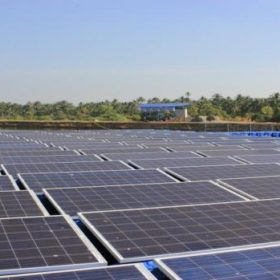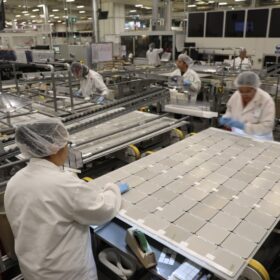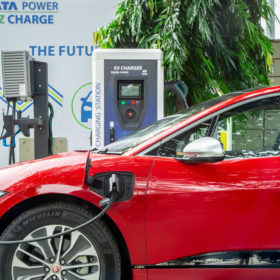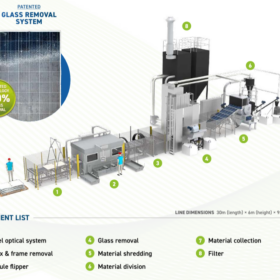Waaree Solar Americas invests in polysilicon company
Waaree Solar Americas has entered into a binding term sheet with United Solar Holding Inc. (USH), a Cayman Islands-based company, to invest around $30 million through the subscription of Series B preferred shares. The investment is a strategic move by Waaree to secure a long-term, fully traceable polysilicon supply chain to support its rapidly expanding manufacturing footprint in the U.S. and globally.
TPCL tenders EPC package for 50 MW solar in Sri Lanka, NGEL invites bids for 100 MW agri-PV projects in India
Trincomalee Power Co. Ltd (TPCL), a 50:50 joint venture between Sri Lanka’s Ceylon Electricity Board and India’s NTPC Ltd, has invited bids for the EPC package of a 50 MW (AC), Phase I ground-mounted solar project at Sampoor, Sri Lanka, while NTPC Green Energy Ltd. (NGEL) has floated a separate tender for an EPC package with land to develop cumulative 100 MW agri-PV projects across four Indian states.
Powering India’s digital transformation: The backbone technologies you don’t see
Every new 5G deployment, data centre expansion, or broadband rollout depends on power and cooling architectures that operate quietly in the background, ensuring continuity, efficiency, and resilience.
The future of impact funding: Aligning capital with sustainable outcomes
The largest area of green financing is energy-efficient machinery, which supports MSMEs in modernising production lines and reducing operational energy consumption. Significant capital is also being channelled into rooftop solar installations, electric vehicles, and enterprises operating in the water, sanitation, and hygiene (WASH) sectors, across clusters such as manufacturing, healthcare, and food processing.
Maxeon expands legal action against Aiko and its distributors in Germany
Maxeon has filed a lawsuit in Germany claiming Aiko Solar, and four of its German product distributors, breached a patent related to its back contact solar technology. It is the third such lawsuit Maxeon has opened against Aiko.
New report charts path to securing raw material supply chains for India’s EV growth
A new report by KPMG outlines strategies to enhance resilience and competitiveness in India’s electric vehicle (EV) ecosystem amid sharply rising demand for critical raw materials such as lithium, nickel, cobalt, and rare earth elements.
Jakson to set up high-tech solar PV module recycling line in partnership with Europe’s Ecoprogetti
Jakson Engineers Ltd will set up a high-tech solar PV module recycling plant capable of recycling around 5,00,000 PV modules, or approximately 13,500 tonnes of modules per year, recovering critical materials and enabling responsible end-of-life solar management. The recycling line will be supplied by Ecoprogetti.
Canada opens review into anti-dumping duties on Chinese PV modules, laminates
Canada’s International Trade Tribunal is running an interim review of the country’s anti-dumping and countervailing duties on solar modules and laminates from China, following a request to exclude flexible solar panels that affix to curved surfaces.
China module market watches 2026 export rebate signals as polysilicon consolidation platform company is registered
In a new weekly update for pv magazine, OPIS, a Dow Jones company, provides a quick look at the main price trends in the global PV industry.
Solar surge in Northern India as Cyclone Ditwah cuts irradiance in the south and Sri Lanka
In a new weekly update for pv magazine, Solcast, a DNV company, reports that November brought above-average solar conditions in northern India and Pakistan, while southeastern India and Sri Lanka faced reduced solar output due to Cyclone Ditwah’s storms and heavy cloud cover. Despite southern disruptions, India’s renewable energy share rose, driven by strong solar generation in the north and overall growth in renewable capacity.














